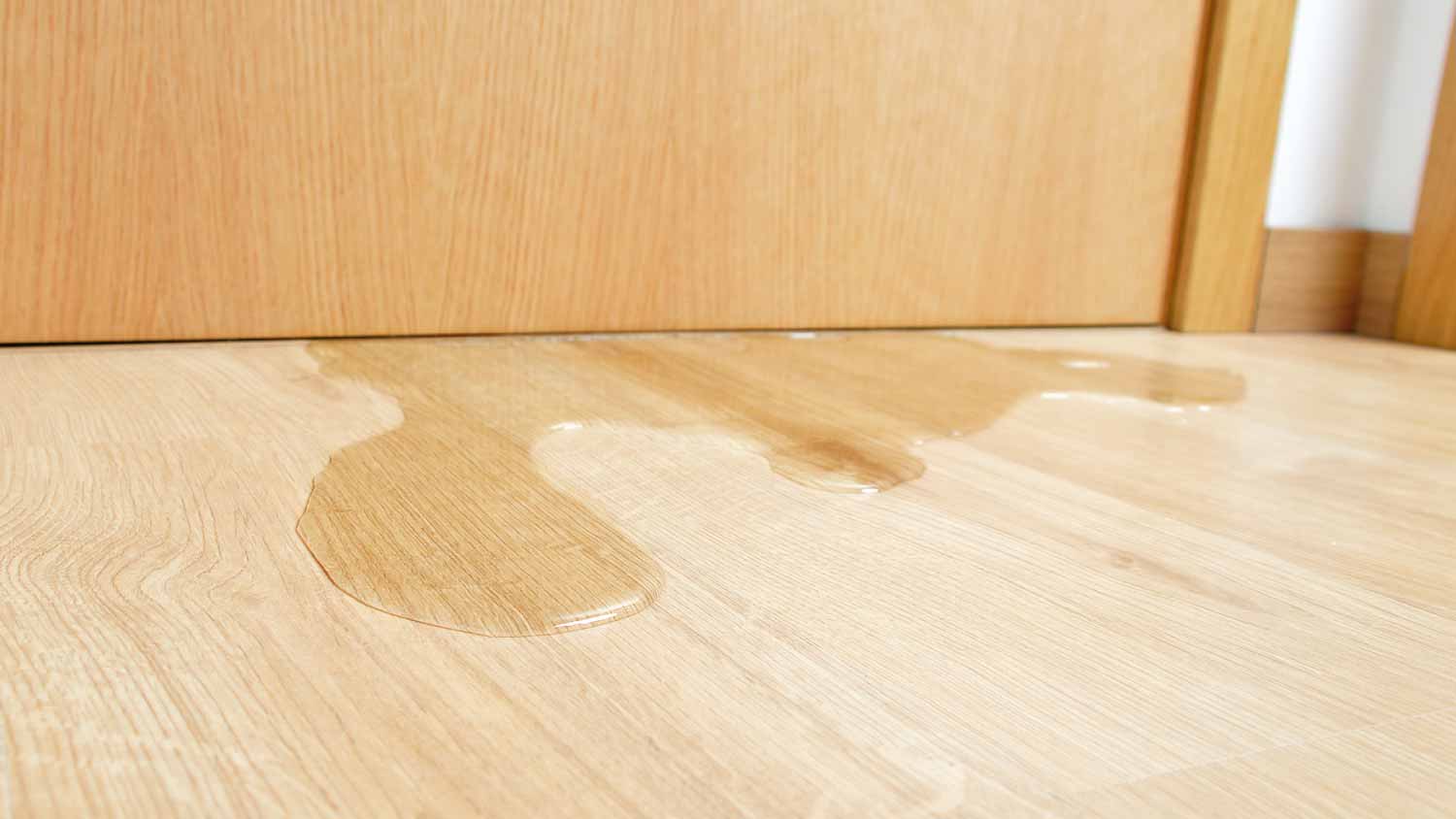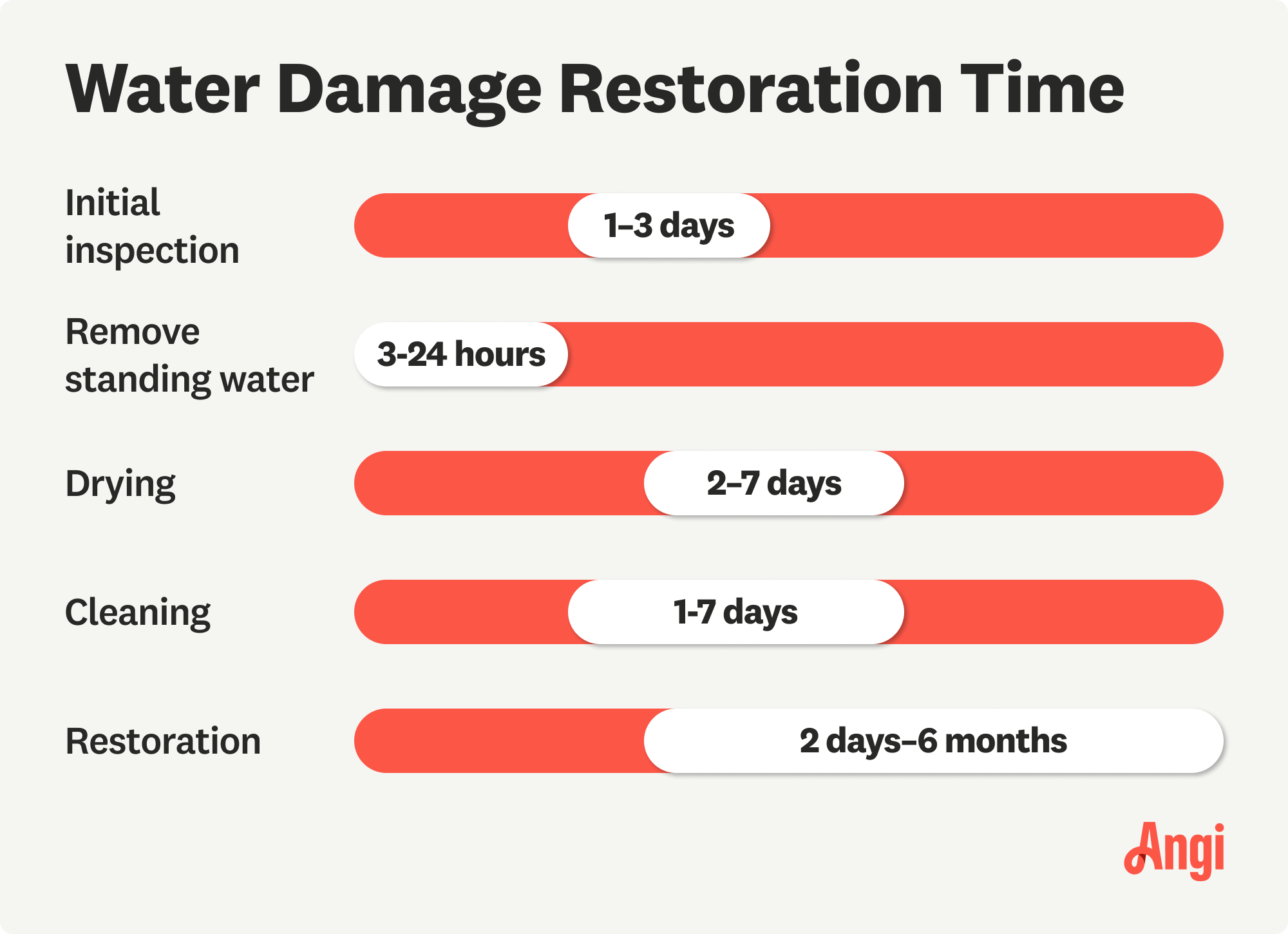
Need to get rid of lingering smoke odors in your home? Learn how much smoke remediation costs to budget accurately for this major undertaking.
Considering more than just drying time


Water damage restoration takes an average of two weeks to dry and remediate.
Mold damage and structural damage can extend the timeline to three to six months.
Your insurance company can cause delays in getting approvals, which can extend your timeline.
Water damage is one of the last things any homeowner wants to see in their home, and getting it remediated can seem nearly impossible if the damage is severe enough. But how long does water damage restoration take, and what’s involved? In this guide, we’ll explain the average timeline, factors that can affect it, and more to get you prepared for the work.
Water damage restoration takes an average of two weeks, but minor damage could take just 24 to 48 hours, and major flooding that leads to structural issues and mold growth could take up to six months to remediate.
The timeline for the work varies so much because there are a few factors that affect the process.
Water damage can include anything from a small amount of mold damage and ruined building materials from a minor plumbing leak to large-scale issues stemming from a flood or a burst pipe. Minor damage behind a single wall should take no more than two days to restore, while more severe damage that causes issues with mold growth and structural damage can take up to six months to restore.
Repairing water damage is technically DIYable, especially if the job is relatively minor, like replacing some damaged drywall and insulation and drying out a small wall void. You could also DIY larger jobs, but the repairs will take significantly longer. A good rule of thumb is to assume that DIYing work will take at least twice as long as it would take a professional.
If your water damage is the result of a natural disaster, like a flood, hurricane, or tropical storm, chances are your homeowner’s insurance policy will cover most or all of the repair costs. While this is great news for your wallet, it does mean you’ll need to wait for an inspection and for your insurer to approve the repair costs. For minor jobs, you could be looking at just one to three days for approval, while approval for major restoration could take up to three weeks.

Understanding the water damage restoration process can help you get a more accurate estimate for how long remediation will take for your particular situation.

Initial inspection: If your insurance company is involved, they’ll first need to conduct an inspection before approving repairs. This should take 1 to 3 days.
Removing standing water: The water damage restoration professional you hire will start by removing standing water and puddles. This should take a few hours but can take up to a day.
Drying: Next, your professional will dry the interior using industrial fans. This process can take 2 to 7 days, depending on the size of the area and the extent of the damage.
Cleaning: Next, your professional will clean up and sanitize any resulting mold growth, as well as remove damaged materials that are beyond repair. This can take anywhere from a day to an entire week.
Restoration: The actual restoration process involves replacing damaged materials, which could take just 2 days for minor damage but can take up to 4 to 6 months in extreme cases where structural damage occurred.
It may be discouraging to hear that getting your home back to normal can take weeks or even months. Luckily, there are a few water damage restoration tips you can use to speed up the process.
Act quickly: The longer you let water damage sit, the higher your risk is of resulting structural damage, pest infestation, and mold growth. Contact your insurance provider and a restoration professional immediately for the fastest results.
Hire reputable specialists: It might be tempting to DIY some of the work, but it will always be faster to hire local water damage restoration professionals. They’ll work more quickly, which will reduce the risk of mold growth and worsening damage. A reputable contractor will also help water damage insurance approvals go more smoothly.
Communicate: Remain in communication with your insurance provider and your restoration specialist to avoid delays and keep things moving along.
From average costs to expert advice, get all the answers you need to get your job done.

Need to get rid of lingering smoke odors in your home? Learn how much smoke remediation costs to budget accurately for this major undertaking.

Water damage restoration costs depend on the severity of the problem, the type of water, and the length of time the damage has been occurring.

Ozone treatment can help with lingering smoke odors. Learn about ozone smoke removal costs to get an accurate idea of how to budget for this service.

Has your area been affected by flooding? Use this water damage restoration checklist to help save your home and protect your belongings.

Standing water can damage your foundation in numerous ways. Learn about the causes, risks, and solutions for foundation damage from standing water.

A water leak in your house is definitely a cause for concern. So, how do you know who to call for a water leak in the wall? Read this guide to find out.